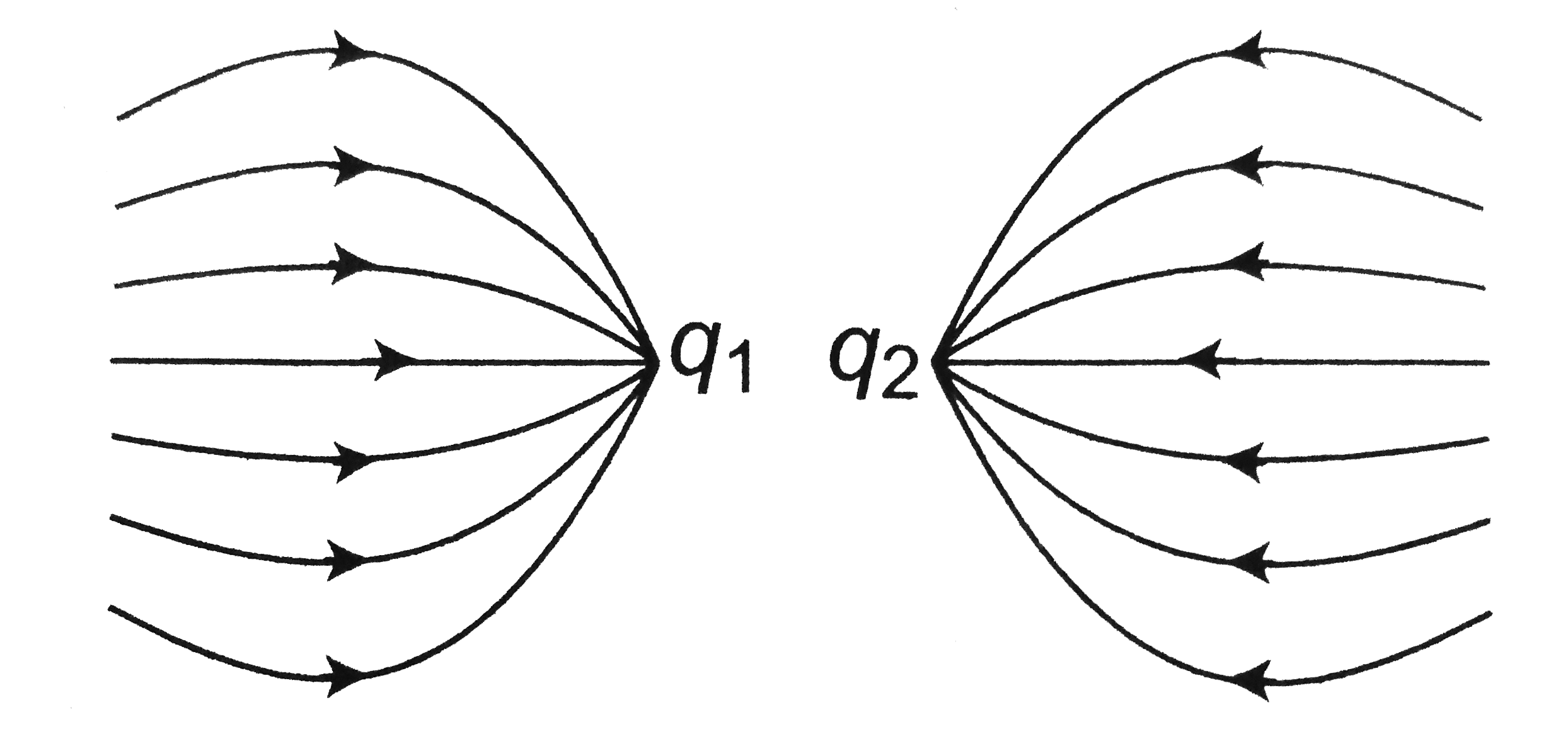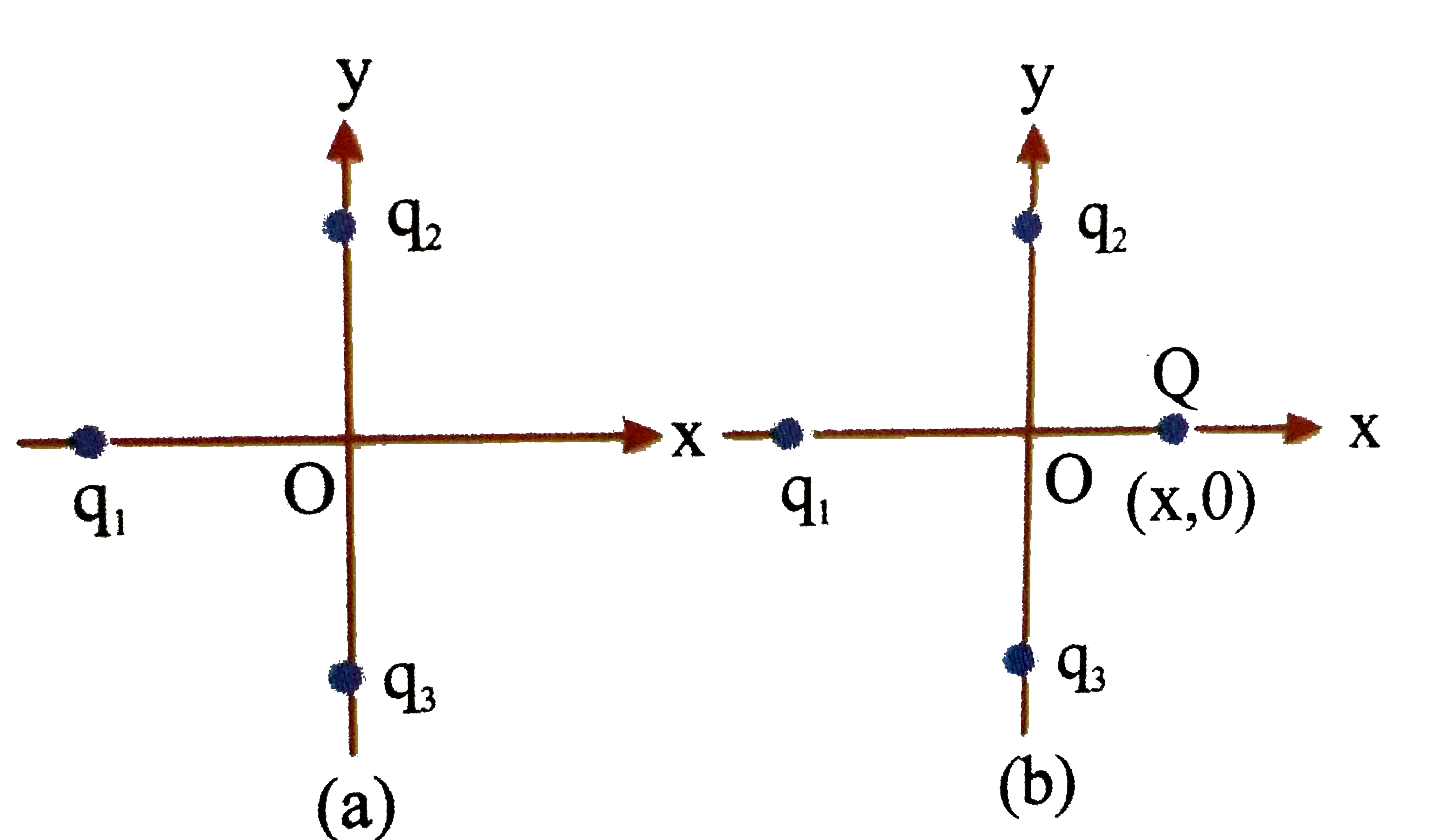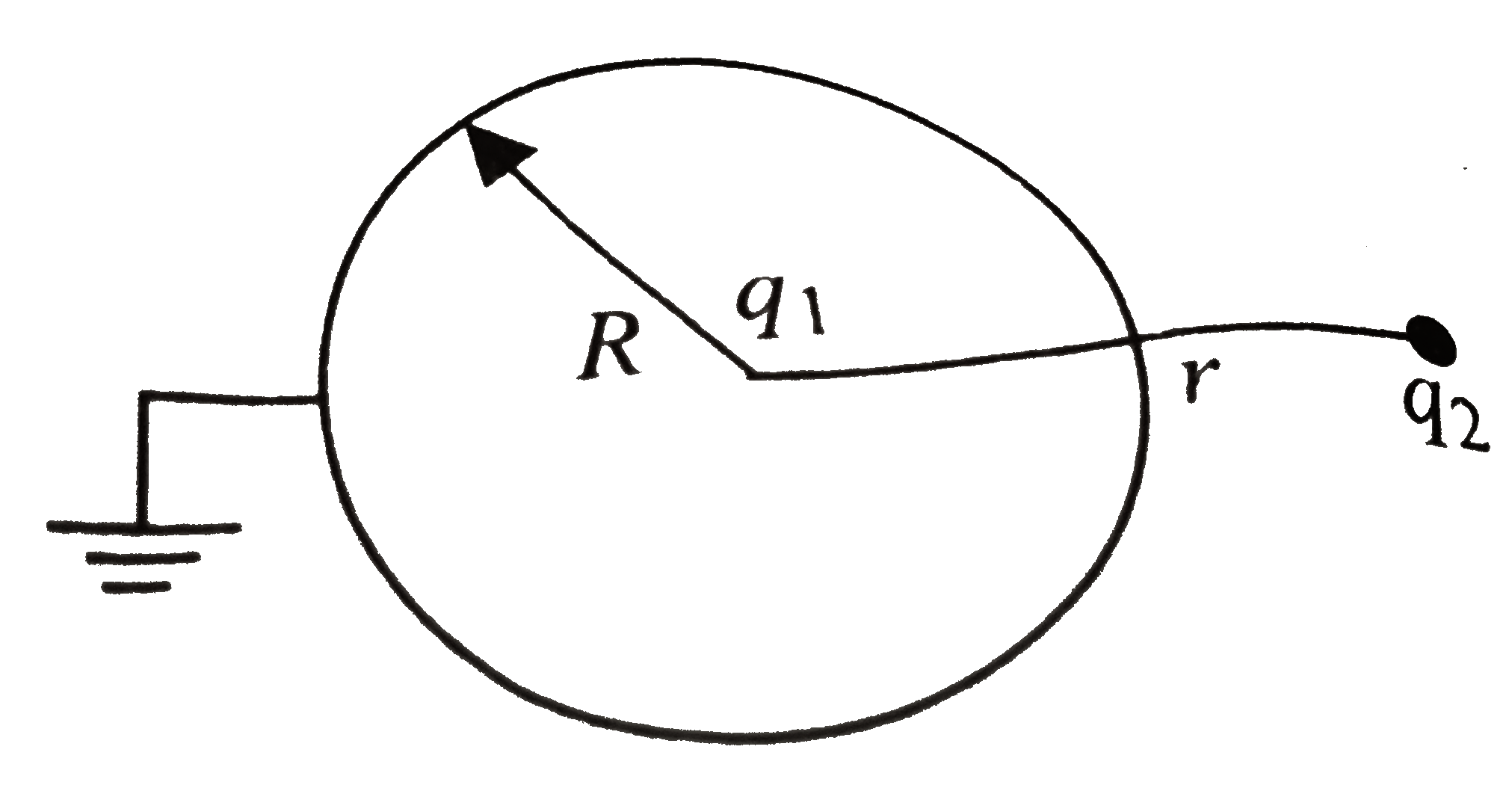The electric force on a charge q1 due to q2 is (4ˆi−3ˆj)N. What is the force on q2 due to q1
The correct Answer is:A, B, C, D
To find the force on charge q2 due to charge q1, we can use Newton's third law of motion, which states that for every action, there is an equal and opposite reaction. This means that the force exerted by q1 on q2 will be equal in magnitude but opposite in direction to the force exerted by q2 on q1.
Given:
- The electric force on charge q1 due to q2 is →F12=(4^i−3^j)N.
To find the force on q2 due to q1, denoted as →F21, we can apply the following steps:
Step 1: Identify the given force
The force on q1 due to q2 is given as:
→F12=4^i−3^j
Step 2: Apply Newton's third law
According to Newton's third law:
→F21=−→F12
Step 3: Calculate the force on q2
Substituting the value of →F12:
→F21=−(4^i−3^j)=−4^i+3^j
Final Answer
Thus, the force on charge q2 due to charge q1 is:
→F21=−4^i+3^jN
- The electric force on charge q1 due to q2 is →F12=(4^i−3^j)N.
The force on q1 due to q2 is given as:
→F12=4^i−3^j
According to Newton's third law:
→F21=−→F12
Substituting the value of →F12:
→F21=−(4^i−3^j)=−4^i+3^j
Thus, the force on charge q2 due to charge q1 is:
→F21=−4^i+3^jN
Topper's Solved these Questions
- BOOK - DC PANDEY ENGLISHCHAPTER - ELECTROSTATICSEXERCISE - Exercise 24.35videos
ELECTROSTATICS
- BOOK - DC PANDEY ENGLISHCHAPTER - ELECTROSTATICSEXERCISE - Exercise 24.44videos
ELECTROSTATICS
- BOOK - DC PANDEY ENGLISHCHAPTER - ELECTROSTATICSEXERCISE - Exercise 24.14videos
ELECTROSTATICS
- BOOK - DC PANDEY ENGLISHCHAPTER - ELECTROSTATIC POTENTIAL AND CAPACITORSEXERCISE - (C) Chapter exercises50videos
ELECTROSTATIC POTENTIAL AND CAPACITORS
- BOOK - DC PANDEY ENGLISHCHAPTER - GRAVITATIONEXERCISE - All Questions135videos
GRAVITATION
Similar Questions
The given figure gives electric line of force due to two charges q1 and q2. What are the signs of the two charges ?
 View Solution
View SolutionThree charges q1=1μC,q2=−2μC and q3=3μC are placed on the vertices of an equilateral triangle of side 1.0 m. find the net electric force acting on charge q1.
How to proceed Charge q2 will attract charge q1 (along the line joining them) and charge q3 will repel charge q1. Therefore, two forces will act on q1, one due to q2 and another due to q3. Since , the force is a vector quantity both of these force (say F1 and F2) will be added by vector method. Following are two methods of their addition
 View Solution
View SolutionIn figure two positive charges q2 and q3 fixed along the y-axis, exert a net electric force in the +x direction on a charge q1 fixed along the x-axis if a positive charge Q is added at (x,0) the force on q1
 View Solution
View SolutionIn figure two positive charges q2 and q3 fixed along the y-axis ,exert a net electric force in the +x direction on a charge q1 fixed along the x-axis if a positive charge Q is added at (x,0) the force on q1
 View Solution
View SolutionIn figure two positive charges q2 and q3 fixed along the y-axis ,exert a net electric force in the +x direction on a charge q1 fixed along the x-axis if a positive charge Q is added at (x,0) the force on q1
 View Solution
View SolutionFigure shows some of the electric field lines due to three point charges q,q2 and q3 of equal magnitude. What are the signs of each of the three charges?
 View Solution
View SolutionSuppose a charge +Q1 is given to the positive plates and a charge −Q2 to the negative plate of a capacitor. What is the "charge on the capacitor"?
View SolutionA charge q1 exerts some force on a second charge q2 If a third charge q3 is brought near q2, then the force exterted by q1 on q2
View SolutionA conducting spherical shell is earthed. A positive charge +q1 is placed at the center and another small positive charge +q2 is placed at a distance r from q1. Ignore the effect of induced charge due to q2 on the sphere. Then the coulomb force on q2 is
 View Solution
View SolutionFind the force on a charge q1(=20μC) due to the charge of q2(=10μC) if the positions of the charges are given as P1(1,−1,2) and Q(−1,1,1)
View Solution

